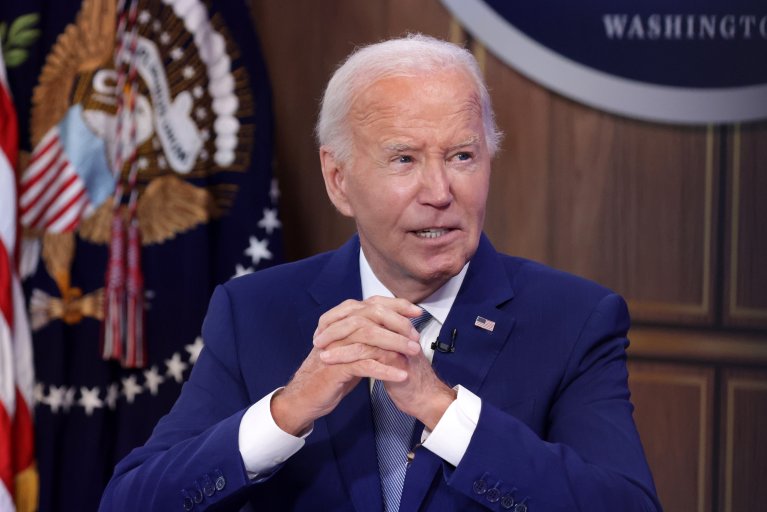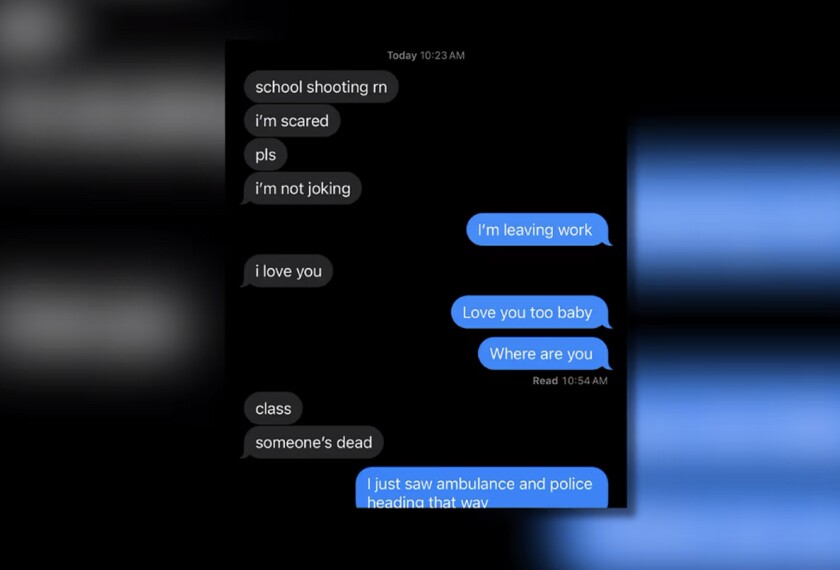Schools have a powerful strategy at their disposal to help improve students’ mental health, one that doesn’t necessarily require banning cellphones: Help kids—especially adolescents—get more sleep.
There is a rich body of research showing that poor sleep leads to poor mental health, said Andrew Fuligni, a psychology professor and director of the Adolescent Development Lab at UCLA. And it’s a link that is getting overlooked in the current frenzy over cellphones and social media, he said.
“The evidence for sleep and mental health is much stronger than the evidence for social media and mental health,” he said. “Added to the mix, adolescents in the United States are getting less and less sleep over the last 15 years or so. I want to highlight that because this is not discussed as much in the national conversation about mental health as it should be.”
Fuligni made these remarks during a webinar about adolescent mental health hosted by the Frameworks Institute, a nonprofit organization that studies strategic communications around social issues.
That’s not to say that social media doesn’t affect students’ mental health, but there’s less research into the connection, and of the research that exists, the findings are mixed.
Meanwhile, a lack of sleep does more than hurt kids’ mental health—adolescents who don’t get enough sleep are more likely to have behavior and attention problems as well as higher risks of obesity, diabetes, and injury.
The vast majority of high schoolers are not getting the 8 to 10 hours of sleep a day recommended by the American Academy of Sleep Medicine.
Also, inequalities in which groups of students are getting better sleep quality exacerbate some of the educational inequalities that schools are already grappling with, Fuligni said.
Students from low-income households are more likely to have parents who work irregular schedules which can throw off sleep routines, he said, while students living in urban areas are more likely to have their sleep disrupted by noise and light pollution.
Sleep quality and consistency—such as whether a student’s sleep is getting interrupted throughout the night or whether a student is going to bed at the same time every night—is also important to adolescent mental health and brain development.
Districts consider changing school start times
To address the inadequate sleep today’s adolescents are getting, there has been a growing movement among some districts and states to push back start times for middle and high school to better align with natural shifts in adolescents’ sleep needs and patterns.
Adolescents are hard-wired to go to bed and sleep in later, which is why the American Academy of Pediatrics recommends that schools shouldn’t start before 8:30 a.m. for adolescents. An increasing amount of research shows that pushing back school start times can improve teens’ learning and well-being, according to the AAP.
But changing school start times is no easy task, said Kent Pekel, the superintendent of Rochester Public Schools in Minnesota. Three years ago, his district pushed back start times for middle and high school. Adjusting start times for a district that covers more than 200 square miles is challenging when taking into account the fact that some students have to get on the bus an hour and a half before school starts, he said.
The district worked with an independent sleep researcher to measure the effects of the schedule changes, Pekel said during the webinar.
“We found that we got benefits in the quality of sleep and the amount of sleep for the high school kids when we moved to that very nice, after 8 a.m. start time,” he said. “The problem was starting the elementary schools at 9:35 proved to be disastrous because we were missing prime learning time for little kids who wake up ready to learn.”
This year, the 17,500-student district has reshuffled start times again and managed to work out a schedule with elementary and high schools starting at 8 a.m., and middle schools starting at 8:30.
Encouraging healthy sleep habits for students
However, simply giving students more time to sleep in doesn’t mean they will automatically get good sleep. To do that, they need better sleep routines and environments—regular bedtimes, quiet and dark spaces, and no screens close to bedtime. While schools don’t have direct control over kids’ sleeping environments, they can help educate families about creating good sleep environments, said Fuligni.
“Physiologically, we are incredibly sensitive to light, to routine, to noise, to hubbub, to all of the things going on in the home,” he said. “Just telling adolescents to go to sleep earlier is not going to work. We need to educate folks how to set up a sleep-sensitive environment: having an agreement within the family about when is a reasonable time to go to bed, keeping phones outside of the room. Parents need to be thinking about things they’re doing in the home, are they staying up too late?”
Access to cellphones can hurt the quality of kids’ sleep if kids are skipping out on sleep to scroll on social media. The content they see on social media, as well as the light from the screen, also stimulates the brain and makes it harder to fall asleep.
Messaging the importance of sleep in a way adolescents will be receptive to has proven to be somewhat tricky, said Pekel.
A straightforward campaign on the benefits of sleep that his district tried initially appeared to fall flat with students. Pekel hopes that a new approach—discussing the benefits of sleep as part of a broader education initiative about wellness—will do better.
There’s research to suggest that reframing how sleep will benefit students will work, said Nat Kendall-Taylor, the CEO of Frameworks Institute and an expert in strategic communications, during the webinar. Trying too hard to persuade adolescents to do something can backfire, he said.
“But explaining the role that sleep plays in the larger conversation around being and feeling well, our research shows is a much more effective strategy to build understanding and influence behavior,” he said. “This move from persuasion to explanation [is] a really powerful strategy.”
Disclaimer: The copyright of this article belongs to the original author. Reposting this article is solely for the purpose of information dissemination and does not constitute any investment advice. If there is any infringement, please contact us immediately. We will make corrections or deletions as necessary. Thank you.




